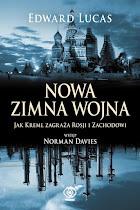Europe.view
The centre cannot hold
Jan 21st 2010
From Economist.com
The borderlands of Europe should not be left behind
PLENTY of places have a claim to be Europe’s geographical centre. French geographers calculated in 1989 that it lies on a hill near Purnuškės in Lithuania. Belarusian cartographers think it is near the town that Russians call Vitebsk (Vitsyebsk in Belarusian). In 1887 in the then Austro-Hungarian empire, geographers erected a monument at Dilove, in what is now the Ukrainian province of Transcarpathia, marking what they reckoned was Europe’s real mid-point.
None of these claims can be definitive; finding Europe’s middle depends on what you count as its edge—the Azores? Iceland? The Ural mountains? The methodology of some claims is unclear. The more exotic ones bear as little relation to geography as the Loch Ness Monster does to aquatic biology. In other words, their purpose is to attract tourists. But at least for the Ukrainians visiting Dilove to be photographed by the monument, this is as far west as they can get.
“Where Europe Ends”, a powerful new film by Alina Mungiu Pippidi, a Romanian scholar and activist, shows the effect of the European Union’s expansion in dividing Europe. The combination of physical decay and human dislocation is poignant. The footage of disintegrating churches, ruined public buildings, shabby homes and bumpy roads leaves the viewer in no doubt of both the region’s rich heritage and its dirt-poor present.
Many of the people interviewed in the film have first-hand experience of the atrocities of the past century. Their grasp of the geopolitics is sometimes hazy, but their memories of shootings and deportations are sharp. Lines on the map drawn by outsiders have divided families and farms, bumping them around like shuttlecocks between different countries and political systems. The creation of a solid eastern frontier to the EU hardly matches the horrific consequences of the Molotov-Ribbentrop pact, but the victims are the same people.
People left behind by history are often those who find coping with the present day most difficult. Humble farmworkers in rural areas find it hard enough getting Ukrainian or Moldovan officials even to issue a travel document. Getting a visa to cross the border is even harder. The film shows the humiliating crowded queues outside EU member states’ consulates and the dismal life of illegal labour and squalid living that awaits those who make it across.
The film is partly paid for by the EU. It should be compulsory viewing for anyone who works in a consulate or visa office dealing with people from what one might call “left-behind” Europe. Some of the local staff there seem to have been hand-picked for their rudeness. Corruption is still troublingly prevalent. The system for visa applicants often appears to have been designed to deter, rather than enable, travel to the west. It may be unrealistic to expect a big liberalisation of visas in the short term. But it is hard to see any arguments against being polite, honest and efficient.
Enlargement has brought huge benefits for those on the inside, while putting the harshest costs on outsiders, particularly those least able to bear it, such as the citizens of Moldova, Europe’s poorest and most neglected country.
The mantra of EU and NATO expansion has been “Europe whole and free”. That may have now outstripped the willingness of voters in the luckier and richer parts of Europe to pay the taxes and accept the dislocation of further expansion.
But opportunities are opening up in Belarus (wriggling away from Russia), Moldova (with its reformist, pro-European, pro-American government) and even post-election Ukraine, assuming that the political paralysis of recent years ends. Treating the centre of Europe as a hopeless and irrelevant borderland cannot be right.
You are here: Home > Ukraine > Europe View nr 168 -- Europe's borderlands
Thursday, February 11, 2010
Europe View nr 168 -- Europe's borderlands
Posted by
Edward Lucas
at
2:33 PM
![]()
Labels:
Europe View,
romania,
Ukraine
Social bookmark this post • View blog reactions
Translate: Portugues | Francais | Espanol | Deutsche | Italiano | Chinese | Korean | Japanese
Subscribe to:
Post Comments (Atom)
























No comments:
Post a Comment